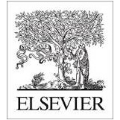Data redundancy techniques have been tested in several different applications to provide fault tolerance and performance gains. The use of these techniques is mostly seen at the hardware, device driver, or file system level. In practice, the use of data integrity techniques with logical data has largely been limited to verifying the integrity of transferred files using cryptographic hashes. In this paper, we study the RAID scheme used with disk arrays and adapt it for use with logical data. An implementation for such a system is devised in theory and implemented in software, providing the specifications for the procedures and file formats used. Rigorous experimentation is conducted to test the effectiveness of the developed system for multiple use cases. With computer-generated benchmarks and simulated experiments, the system demonstrates robust performance in recovering arbitrary faults in large archive files only using a small fraction of redundant data. This was achieved by leveraging computing power for the process of data recovery.
翻译:暂无翻译



